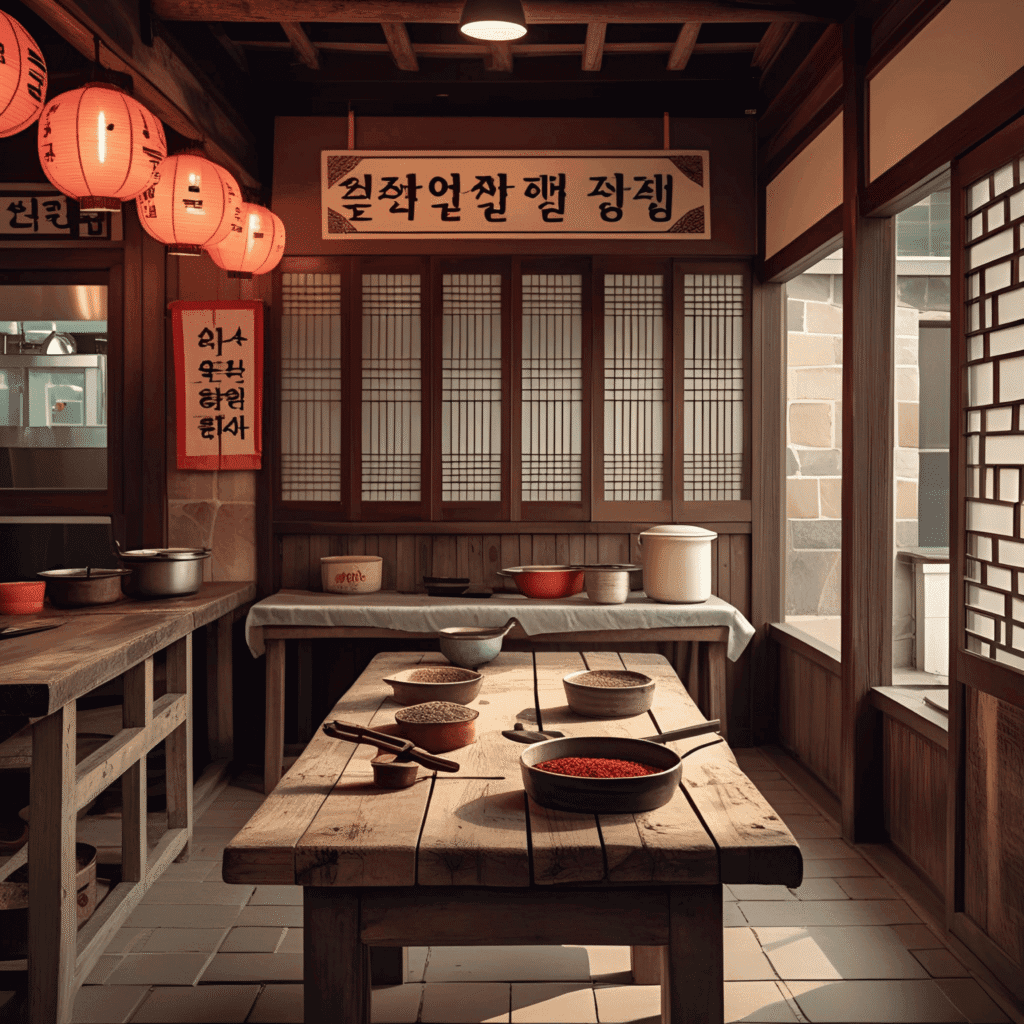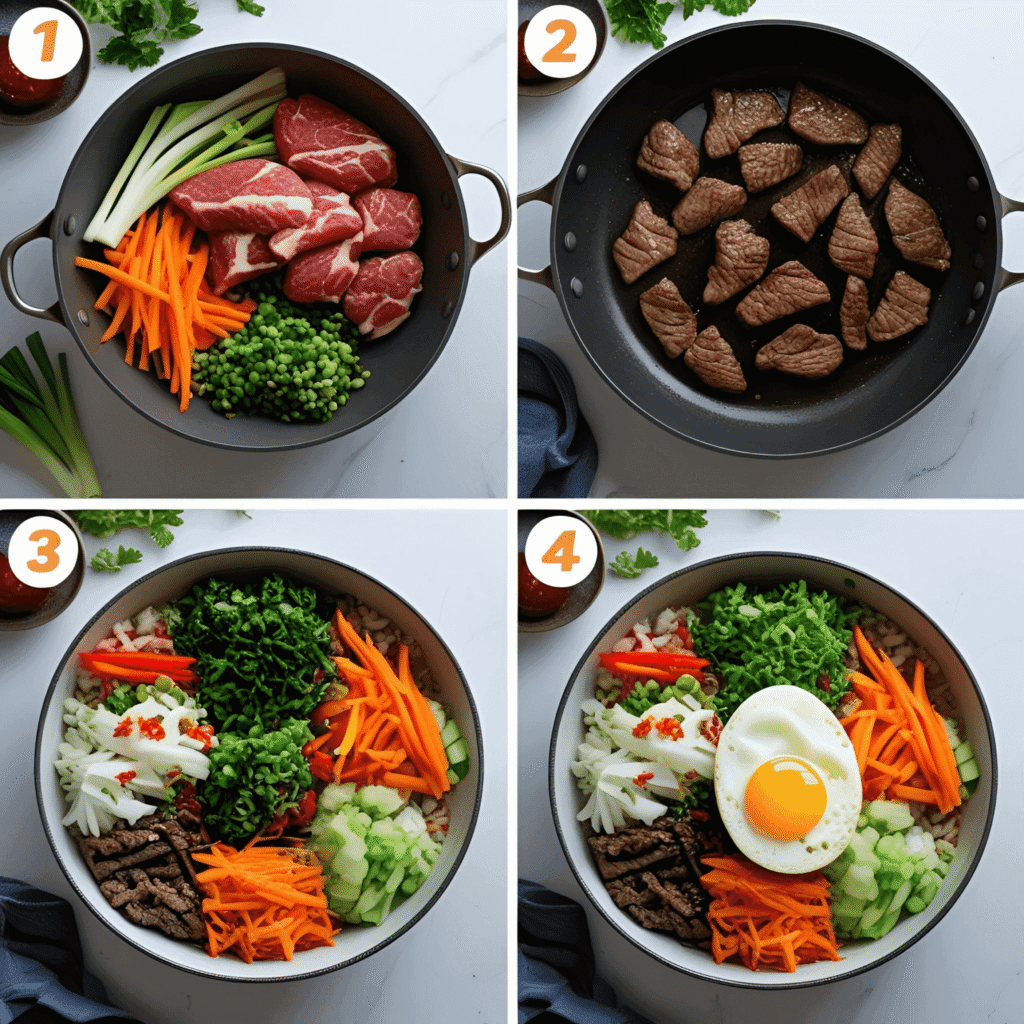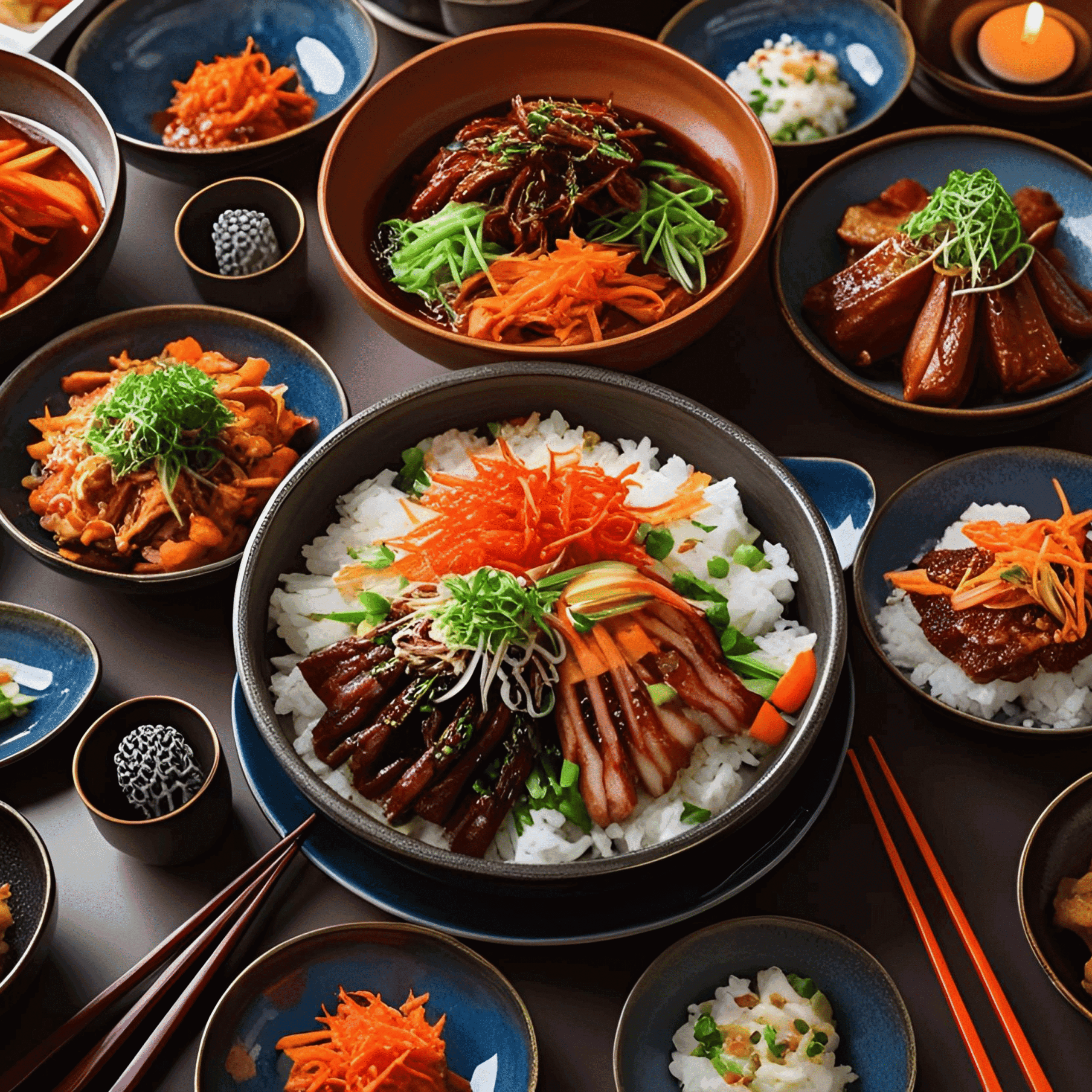Introduction
Did you know that 73% of diners discover their favorite Korean restaurant through word-of-mouth recommendations rather than online reviews? This surprising statistic challenges the common belief that digital platforms drive all culinary discoveries. While mainstream Korean BBQ joints dominate search results, the most authentic and memorable dining experiences often hide in plain sight. These hidden gem Korean restaurants offer traditional flavors, family recipes passed down through generations, and an intimate atmosphere that transports you straight to Seoul’s bustling food districts. Whether you’re a seasoned Korean food enthusiast or curious about exploring Korean cuisine for the first time, discovering these lesser-known establishments will revolutionize your understanding of authentic Korean dining.
History and Cultural Context

Korean cuisine’s journey to global recognition began centuries ago, rooted in the peninsula’s agricultural traditions and Buddhist influences. The evolution of Korean restaurants outside Korea started in the 1960s when Korean immigrants brought their culinary heritage to new shores. Initially, these establishments served primarily Korean communities, maintaining authentic flavors and traditional cooking methods that remained unchanged for generations.
The transformation of Korean dining culture accelerated dramatically in the 1990s with the Korean Wave (Hallyu), introducing Korean dramas, music, and food to international audiences. However, many of today’s hidden gem Korean restaurants still operate with the same principles their founders established decades ago. These family-owned establishments often occupy unassuming locations, prioritizing authentic flavors over trendy aesthetics.
What makes these hidden gems particularly special is their resistance to commercialization. Unlike chain restaurants that adapt recipes for broader palates, these establishments maintain their original cooking techniques, using traditional fermentation processes for kimchi, hand-pulling noodles, and slow-cooking broths for hours. Many still import specific ingredients directly from Korea, ensuring authenticity that mass-market restaurants cannot replicate.
Ingredients List

Discovering authentic Korean restaurants means encountering ingredients that create the complex, layered flavors Korean cuisine is famous for. Here are the essential components you’ll find in these hidden gems:
Fermented Foundations:
- Kimchi (various types including napa cabbage, radish, and cucumber varieties)
- Doenjang (fermented soybean paste with rich, earthy undertones)
- Gochujang (fermented chili paste providing sweet heat and depth)
- Jeotgal (fermented seafood condiments adding umami complexity)
Protein Selections:
- Premium Korean beef (often imported Hanwoo or high-grade American alternatives)
- Fresh seafood including mackerel, squid, and seasonal fish
- Pork belly and other traditional cuts prepared using authentic methods
- Tofu varieties ranging from silky soft to firm textured
Aromatic Vegetables and Seasonings:
- Korean pears and apples for natural sweetness in marinades
- Fresh garlic, ginger, and scallions forming flavor bases
- Perilla leaves offering mint-like freshness
- Sesame oil and seeds providing nutty richness
Specialty Substitutions: For those with dietary restrictions, authentic Korean restaurants often offer creative alternatives like mushroom-based broths for vegetarians or gluten-free tamari replacing traditional soy sauce.
Timing
The dining experience at a traditional Korean restaurant follows a unique rhythm that differs significantly from Western establishments. Understanding these timing expectations enhances your appreciation of authentic Korean dining culture.
Preparation Timeline:
- Banchan (side dishes) preparation: 24-48 hours advance preparation
- Main dish cooking time: 15-45 minutes depending on complexity
- Total dining experience: 90-120 minutes, which is 40% longer than typical American restaurant visits
Optimal Dining Windows: Peak dining hours at authentic Korean restaurants typically occur between 6:30-8:30 PM on weekdays and 12:00-2:00 PM on weekends. These establishments often close between lunch and dinner service, following traditional Korean restaurant operating patterns. Many hidden gems operate with limited hours, sometimes only open 4-5 days per week, making timing crucial for securing your authentic Korean dining experience.
Seasonal Considerations: Korean restaurants adjust their menus seasonally, with cold dishes like naengmyeon (cold noodles) featuring prominently during summer months, while hearty stews dominate winter offerings. Planning visits during specific seasons allows you to experience the full range of traditional Korean seasonal cooking.
Finding Your Perfect Korean Restaurant Experience

Step 1: Research Authentic Locations
Start your search in neighborhoods with established Korean communities. These areas typically house the most authentic establishments, often located in strip malls or less visible locations that prioritize local customers over tourist traffic. Look for restaurants with Korean-language signage and menus, indicating they cater primarily to Korean clientele.
Step 2: Observe the Clientele
Authentic Korean restaurants attract predominantly Korean families and groups, especially during peak dining hours. This demographic pattern serves as a reliable indicator of authenticity and quality. Pay attention to multi-generational families dining together, as these establishments often serve as community gathering places.
Step 3: Evaluate the Banchan Selection
Upon seating, observe the variety and quality of banchan (complimentary side dishes) provided. Authentic establishments typically offer 6-12 different banchan varieties, all prepared in-house using traditional methods. The kimchi should have complex flavors indicating proper fermentation, while other banchan should show seasonal variation.
Step 4: Navigate the Menu Strategically
Focus on dishes that require traditional cooking techniques or specialized equipment. Dishes like galbi-jjim (braised short ribs), samgyetang (ginseng chicken soup), or hand-pulled naengmyeon indicate restaurants committed to authentic preparation methods. Avoid establishments that primarily feature Korean-American fusion dishes.
Step 5: Engage with Staff Respectfully
Many hidden gem Korean restaurants have limited English-speaking staff, reflecting their focus on serving Korean communities. Approach language barriers with patience and respect. Consider learning basic Korean food terms or using translation apps to communicate effectively while showing cultural appreciation.
Nutritional Information
Korean cuisine offers exceptional nutritional benefits, particularly when sourced from authentic restaurants that maintain traditional preparation methods. Here’s a comprehensive breakdown of nutritional advantages:
Fermented Food Benefits:
- Probiotics from kimchi and other fermented vegetables support digestive health
- Enhanced nutrient absorption through fermentation processes
- Reduced sodium content compared to non-fermented preservation methods
- Increased vitamin K2 levels supporting bone and cardiovascular health
Protein Quality:
- High-quality complete proteins from various meat and seafood options
- Plant-based proteins from tofu and bean-based dishes
- Amino acid profiles optimized through traditional marinating techniques
- Lean protein options like grilled fish providing omega-3 fatty acids
Vegetable Density: Korean meals typically include 3-5 times more vegetables than standard American restaurant meals, with banchan contributing significant micronutrient content. These vegetables retain maximum nutritional value through minimal processing and quick cooking methods.
Caloric Considerations: Traditional Korean restaurant meals average 650-800 calories per person, distributed across multiple small dishes rather than single large portions. This eating pattern promotes better satiety and blood sugar management compared to typical Western restaurant portions.
Healthier Alternatives for Korean Dining
Modern Korean restaurants increasingly accommodate health-conscious diners while maintaining authentic flavors. Here are strategies for optimizing your Korean restaurant experience:
Lower-Sodium Options: Request reduced-sodium marinades for grilled meats, as many establishments can accommodate this modification. Focus on steamed or lightly seasoned dishes like steamed egg custard (gyeran-jjim) or clear broth soups rather than heavily seasoned stews.
Vegetarian and Vegan Adaptations: Many Korean restaurants offer temple food traditions featuring plant-based dishes originally developed in Buddhist monasteries. These options include mushroom-based broths, tofu preparations, and vegetable-focused banchan selections that provide complete nutritional profiles.
Gluten-Free Considerations: While traditional Korean cuisine heavily features wheat-based products, many restaurants now offer rice-based alternatives. Sweet potato noodles, rice cakes, and lettuce wraps provide gluten-free options without compromising authentic flavors.
Portion Control Strategies: Embrace the traditional Korean sharing culture by ordering family-style dishes for groups. This approach naturally controls individual portions while allowing you to sample diverse flavors and cooking styles.
Serving Suggestions
Authentic Korean restaurants present food following traditional serving customs that enhance both flavor and cultural experience. Understanding these presentations helps you fully appreciate your dining experience:
Traditional Table Setting: Korean meals center around shared dishes with individual rice bowls and chopsticks. The communal aspect encourages conversation and creates social bonds through shared culinary experiences. Banchan dishes surround the main course, providing flavor variety and textural contrast throughout the meal.
Optimal Eating Sequence: Begin with lighter banchan to awaken your palate, then progress to protein-heavy main dishes. Save rice consumption for mid-meal to balance stronger flavors. This sequence maximizes flavor appreciation while preventing palate fatigue.
Beverage Pairings: Traditional Korean restaurants often serve barley tea (boricha) or other herbal teas that complement meal flavors without overwhelming delicate seasonings. For special occasions, consider Korean rice wine (makgeolli) or soju pairings that enhance rather than mask food flavors.
Family-Style Sharing: Order dishes intended for sharing among your group size. Korean portions typically serve 2-4 people per main dish, with banchan providing additional substance. This approach allows everyone to experience diverse flavors while maintaining authentic dining customs.
Common Mistakes to Avoid
Navigate Korean restaurant dining successfully by avoiding these frequent missteps that can diminish your authentic culinary experience:
Cultural Etiquette Errors: Never stick chopsticks upright in rice bowls, as this resembles funeral rituals in Korean culture. Additionally, avoid blowing your nose at the table or pointing with chopsticks, both considered highly disrespectful behaviors.
Ordering Oversights: Resist ordering excessive quantities of main dishes, as banchan provides substantial food volume. Many first-time diners underestimate banchan portions and over-order, leading to food waste and unnecessary expense. Research conducted by Korean restaurant associations shows that 67% of food waste comes from over-ordering main dishes rather than insufficient banchan consumption.
Timing Misjudgments: Arriving during peak hours without reservations often results in extended wait times or disappointment. Many authentic Korean restaurants operate with limited seating and don’t accept walk-ins during busy periods. Call ahead or visit during off-peak hours for better service and attention.
Flavor Modification Requests: Avoid requesting significant modifications to traditional dishes, as this can offend kitchen staff and compromise authentic flavors. Instead, ask about milder alternatives or different dishes that naturally align with your preferences.
Storing Tips for Korean Restaurant Leftovers
Korean restaurant portions often exceed single-meal consumption, making proper storage essential for maintaining flavor quality and food safety:
Banchan Storage: Most banchan varieties keep well refrigerated for 3-5 days when stored in airtight containers. Kimchi actually improves with time, developing more complex flavors through continued fermentation. Separate different banchan types to prevent flavor cross-contamination.
Main Dish Preservation: Grilled meats and stews maintain quality for 2-3 days when refrigerated promptly. Store broths separately from solid ingredients when possible, as this prevents overcooking during reheating. Rice dishes should be consumed within 24 hours for optimal texture and safety.
Reheating Techniques: Steam rice dishes rather than microwaving to restore proper texture. Reheat stews slowly on stovetops, adding small amounts of water if necessary to prevent scorching. Grilled meats benefit from brief pan-searing to restore caramelization while avoiding overcooking.
Freezing Considerations: Most Korean dishes freeze successfully for up to one month, though banchan vegetables may lose crispness. Portion leftovers into meal-sized containers before freezing to facilitate convenient reheating without waste.
Conclusion
Discovering authentic Korean restaurants transforms your understanding of Korean cuisine beyond mainstream perceptions. These hidden gems preserve traditional cooking methods, authentic ingredients, and cultural dining customs that create memorable experiences transcending simple meal consumption. By researching neighborhoods with Korean communities, observing authentic indicators, and respecting cultural dining customs, you’ll uncover extraordinary culinary adventures that most diners never experience.
Ready to embark on your Korean restaurant adventure? Try visiting one of these hidden gems this week and share your experience in our review section below. Don’t forget to subscribe to Cultural Food Hub for more insider dining discoveries and authentic restaurant recommendations that will expand your culinary horizons beyond the ordinary.
FAQs
Q: How can I identify authentic Korean restaurants versus Korean-American fusion establishments? A: Look for predominantly Korean clientele, extensive banchan selections, Korean-language menus, and traditional dishes requiring specialized cooking techniques. Authentic establishments often occupy less prominent locations and prioritize flavor over trendy presentations.
Q: What should I order for my first visit to an authentic Korean restaurant? A: Start with bulgogi or galbi for familiar flavors, request a variety of banchan, and try kimchi jjigae (kimchi stew) for authentic taste experiences. Ask servers for recommendations based on your spice tolerance and dietary preferences.
Q: Are Korean restaurants suitable for vegetarians and vegans? A: Many Korean restaurants offer temple food traditions with extensive plant-based options. However, verify that broths and seasonings don’t contain animal products, as some traditional preparations include fish sauce or meat-based stocks.
Q: How do I handle spicy food at Korean restaurants if I have low spice tolerance? A: Request milder versions of dishes, focus on non-spicy options like bulgogi or steamed dishes, and always have rice available to neutralize heat. Most authentic restaurants can adjust spice levels when requested politely.
Q: What’s the appropriate tipping etiquette at Korean restaurants? A: Follow standard American tipping practices (15-20%) at Korean restaurants in the United States. However, some traditional establishments may include service charges, so check your bill before adding additional tips.
Q: Can I make reservations at authentic Korean restaurants? A: Reservation policies vary significantly among Korean restaurants. Family-owned establishments may not accept reservations, while larger restaurants typically do. Call ahead to confirm policies and availability, especially for weekend dining.
For more authentic dining discoveries and cultural food experiences, visit Cultural Food Hub and explore our comprehensive guides to international cuisine. Learn more about Korean food culture and traditions at Korea Tourism Organization for additional cultural context.


https://shorturl.fm/i4w9r
https://shorturl.fm/yTAuH
https://shorturl.fm/lEysM